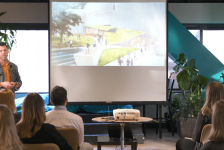2022 has been a year in which we are reminded in headline after headline that climate change is, in fact, not a problem to prepare for but a present and dire force to be reckoned with. The effects of increasingly frequent natural disasters and extreme temperature shifts are global issues that require innovative and imaginative solutions. Fortunately, the end is not nigh, as those same headlines are coupled with the groundbreaking news of climate capturing technologies and an increased awareness of what, exactly, our natural world is capable of.
At the Land8x8 Lightning Talks, Matthew Gindlesperger, PLA and Associate at Martha Schwartz Partners (MSP), sees the potential of these climate resiliency technologies to play a substantial role in the practice of landscape architecture. “[We are] the leading profession to face the threat of climate change.”
MSP has a reputation for artistic curiosity and genuine care to create dreamlike yet pertinent public spaces globally. Beginning with roots in the infamously famous Bagel Garden, Gindlesperger details how MSP stems out of originality and artistry. He asks, “How do we scale that level of creativity for a global problem?”
The answer is the Virtuous Cycles, a whole-system and multi-system way of thinking about landscapes that expands beyond the human level, asking how all can come together and “close the loop” between input and output of systems.

The Virtuous Cycles “utilize nature-based solutions and technologies to create self-sustaining and carbon-negative systems,” says Gindlepserger. With a focus on five components (energy, water, CO2, food, and materials), the Virtuous Cycles is the intersection of the human, groundbreaking technologies, and environmental implementations as they come to form a dream team in resilient landscape architectural implementations. The overall goal is to create a toolkit that minimizes waste, maximizes productivity, and positively impacts the environment.
MSP has been focusing the Virtuous Cycles implementation in the Middle East, a region with extreme temperatures and environments.
The Wadi Ring project deals with a dry, desert climate in which flash floods become a “vital source of water [in an area] where it is so precious,” says Gindelsperger. By examining surface hydrology, the flash floods become a system of capture and reuse in the landscape architecture design. At the same time, microclimates bloom out of the desert’s greening. The Wadi Ring, futuristic yet aesthetically relevant for the space, is calculated to meet 30% of irrigation demand through storm events alone. The rest is planned to be met through on-site wastewater recycling. Afforestation occurs over a timeline through a gradient of spaces with low to high water necessity.
MSP is also developing a Regenerative Marine and Nature Preserve in a Middle Eastern coastal context. In a space that, visually seems to be barren, Gindlesperger asks, “What could grow there?” Upon investigation, it reveals that this desert landscape is actually created by water movement, and even more ecosystems exist beneath the sea’s surface. Desert greening can be accomplished with low-input solutions to activate a dormant seed bank within the sandy soil. MSP layers on top of this artistic renditions of wastewater capsules, nanotechnology installations, and even “Eco Resorts” that playfully connect land and sea experiences.
—
This video was filmed on September 9, 2021 in Brooklyn, NY as part of the Land8x8 Lightning Talks sponsored by Anova Furnishings.
Published in Blog, Cover Story, Featured




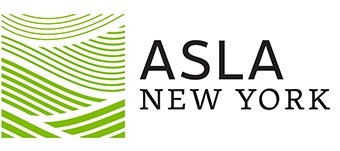
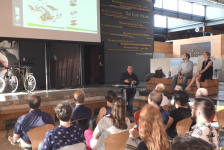
![Deep Collaboration: Ecology, Research, Design [Video]](https://land8.com/wp-content/uploads/2018/05/stephanie-carlisle-224x150.png)
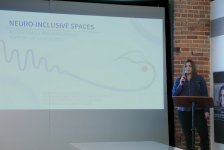
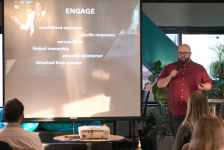
![Beyond Our Landscapes: Interdisciplinary Research and Design for Health [Video]](https://land8.com/wp-content/uploads/2018/02/coco-alarcon-224x150.png)

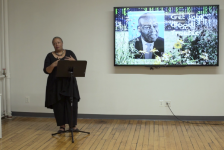
![The Next Green Revolution [Video]](https://land8.com/wp-content/uploads/2018/01/Thomas-Rainer-Land8x8-224x150.png)
